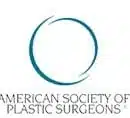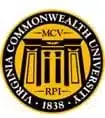In 2011 the FDA identified a possible link between incidences of Breast Implant-Associated Anaplastic Large Cell Lymphoma (BIA-ALCL) and woman who had undergone breast implant surgery using textured implants. While incidences of this type of cancer are still extremely rare, it is out duty to advise patients of potential risks associated with any type of cosmetic surgery, and what we as a medical practice, are doing to counteract such risks.
The FDA, in tandem with the World Health Organization, fully acknowledge that BIA-ALCL is a rare T-cell lymphoma that can develop in patients who have undergone breast implants. Both bodies also agree that at present, there is sufficient data to suggest that BIA-ALCL occurs more frequently when breast implants with textured surfaces have been used, rather than those with smooth surfaces.
What is Breast Implant-Associated Anaplastic Large Cell Lymphoma (BIA-ALCL)?
While the BIA-ALCL is found in the breast following certain types of breast implantation, it is NOT the same as a cancer of the breast tissue. Breast implants are inserted either behind the breast tissue or under the chest muscle. In the period following surgery, a fibrous scar called a “capsule” develops around the implant, which separates the implant from the rest of the breast. In women with breast implants who were diagnosed with BIA-ALCL, the lymphoma was found next to the breast implant itself, and the malignant cells were detected in the fluid or scar tissue surrounding them.
Although this article discusses the finding of Anaplastic Large Cell Lymphoma in women who have undergone breast implant surgery, the lymphoma itself is not limited to developing in or around the breast area. As a cancer of the cells of the immune system, it can occur in many different parts of the body, including the lymph nodes and skin.
Based on available information at this present time, the FDA believes it is not possible to confirm with statistical certainty that breast implants cause ALCL as incidences of ALCL are still extremely low, even in breast implant patients. It is also not possible to reliably identify a type of implant (silicone versus saline) or a reason for implant (reconstruction versus aesthetic augmentation) that offers patients a higher or lower risk of contracting the Lymphoma.
While this information may sound deeply concerning to women who have undergone breast implant surgery, it is important to note that BIA-ALCL is extremely rare, and according to FDA Guidelines is completely treatable by excision of the capsule along with treatment on the recommendation of an appropriate ongoing care plan.
What is the risk of developing BIA-ALCL following breast implant surgery?
According to a study by The American Association For Aesthetic Plastic Surgery, Inc the current risk of contracting the disease is estimated to be around 1in 30,000 and that there has never been a reported case in woman with smooth surface breast implants.
To put this into perspective, the risk of contracting breast cancer is around 1 in 8 women, making BIA-ALCL still a very rare and relatively unknown form of Lymphoma.
What are the symptoms of BIA-ALCL?
BIA-ALCL usually presents with what are known as “late onset” symptoms. This means that they can appear a long time after your surgery has taken place, and the point of implant has healed. With BIA-ALCL symptoms are usually found to appear between three to 14 years following the insertion of the breast implants, although the average time to presentation was around 8 years after surgery.
BIA-ALCL is often difficult to diagnosis as other diseases and cancers of the breast can cause very similar symptoms. Symptoms can vary from person to person, but the most common ones to be aware of include:
- Swelling of the breast that appears very quickly and does not subside
- Fluid collection in the breast that develops months or even years after surgery
- Redness and swelling of the breast around an implant that is not from an infection
- Contraction of the scar tissue capsule surrounding the breast implant
Other less common symptoms can also be an indication of the presence of lymphoma, including lumps in the breast or the armpit. Of course, with or without breast implants, breast health is important and regular self inspection is recommended as an early detection method for breast cancer.
Most of the patients found to have BIA-ALCL were diagnosed after they sought medical treatment for implant-related symptoms such as pain, lumps, swelling, or asymmetry that developed after their initial surgical sites had fully healed.
If you have any concerns about pain or irregularities in your breasts following implant surgery, be sure to let your doctor know about them as soon as you can.
How is BIA-ALCL diagnosed?
If a woman develops swelling of the breast which has an implant they will usually be sent for an ultrasound scan. If fluid is detected during the scan, a small sample will be removed and sent away to be tested for BIA-ALCL. Most fluid collections around breast implants are not related to BIA-ALCL and testing will be able to rule out the condition in the majority of woman. In the very small amount of confirmed cases, MRI and PET/CT scans may be performed to help stage the disease and to devise the best care plan for the patient.
How is BIA-ALCL treated?
In cases where BIA-ALCL has been positively diagnosed, patients will undergo surgery to remove the implant and surrounding scar tissue. This may also include a lymph node dissection (LND) to remove any lymph nodes that are suspicious, or are found to have ALCL cells. Further ongoing courses of treatment will be dependent on the following factors:
- The type of BIA – ALCL
- The stage of the disease
- The exact location of the cancer
- The age and general health of the patient
In cases where surgery alone is not expected to fully treat the disease, a course of chemotherapy or radiation therapy may also be offered to ensure the body if free from cancer. When given after surgery, radiation may reduce the chance of the cancer coming back in patients with an advanced form of the disease.
The treatment of BIA-ALCL should also focus on breast reconstruction, restoration, and the ongoing quality of the patients life. After all, every woman who undergoes breast implant surgery has a particular desire to do so, which may still be a personal concern even after an BIA-ALCL diagnosis and treatment.
What is the recovery rate for women diagnosed with BIA-ALCL?
The FDA can still only gather data from the very small number of cases that have been linked to breast implant surgery so far. For 100% of the reported cases, patients went in to remission following treatment without any evidence of reoccurrence.
In 2016, there were several advances in the description of the disease and treatment recommendations. The World Health Organization recognized breast implant-associated anaplastic large cell lymphoma as a rare T-cell lymphoma that can develop following breast implants and recorded it as such. While Professional organizations including the Plastic Surgery Foundation and the National Comprehensive Cancer Network (NCCN) published information to help us physicians understand the disease and provide diagnosis and treatment to enable us to provide better care for our patients.
Dr. Gregory T. Lynam and Breast Implant-Associated Anaplastic Large Cell Lymphoma (BIA-ALCL)
As a surgeon, Dr. Gregory T. Lynam has never used textured implant. As Richmond’s only board-certified plastic and maxillofacial surgeon, Dr Lynam and his team regularly keep abreast of the FDA findings regarding BIA-ALCL and update our practices accordingly.
The FDA continues to collect and evaluate information about ALCL in women with breast implants on an ongoing basis. Their investigations include:
- Receiving and reviewing medical device reports (MDRs).
- Reviewing all current medical literature.
- Exchanging information with other international regulators and scientific experts.
- Reviewing data from the Patient Registry and Outcomes for Breast Implants and Anaplastic Large Cell Lymphoma (ALCL) Etiology and Epidemiology (PROFILE Registry) (a collaborative effort with the American Society of Plastic Surgeons (ASPS) and the Plastic Surgery Foundation (PSF).
- Reviewing information that breast implant manufacturers include about BIA-ALCL in their patient and health care professional labeling.
Our commitment to our patients means that we would never knowingly put any breast implant patient at unnecessary risk of contracting any form of life altering disease as a result of breast implant surgery.
We always discuss the possible risks associated with implant surgery with our patients before they commit to undergoing surgery. We provide manufacturers labelling as well as other educational materials to help our patients make informed choices about their surgery and the type of implant they would prefer.
If a patient returns to us with symptoms that have developed a long time after the initial healing process has concluded, we will investigate thoroughly and not rule out the possibility of BIA-ALCL. If we do suspect the lymphoma we will refer the patient to an appropriate specialist for further evaluation.
As a patient-first practice we would work with a confirmed diagnosis to provide an individualized treatment plan in coordination with the patient’s multi-disciplinary care team.
As stipulated by the FDA we would report any confirmed cases both to them and the PROFILE registry for investigation and to assist their ongoing research.
Patients and Breast Implant-Associated Anaplastic Large Cell Lymphoma (BIA-ALCL)
If you are considering undergoing breast implant surgery we would recommend that you speak to a fully qualified and regulated physician in the first instance. Any kind of surgery has some level of risk attached to it, and our (insert name and qualification) will be able to clearly and concisely advise you of the same.
Breast implants approved in the U.S. can be filled with either saline or with silicone gel. They come in different sizes and shapes and have either smooth or textured surfaces (shells). We would recommend that you research both of these options thoroughly, and following your initial consultation with us, before you make your decision. Further information can be found on the FDA’s Breast Implants website.
While BIA-ALCL is incredibly rare, if does appear to develop more frequently in woman with textured implants, than those with smooth-surfaced implants. We are on hand to discuss the benefits and risks of both types of implant before you commit to any surgery.
If you already have breast implants, there is no need to panic or to make any changes to your existing care plan. You should however, always follow the standard medical recommendations including:
- Following your doctor’s instructions on how to monitor your breast implants. If you do notice any changes, contact your health care provider promptly to schedule an appointment.
- Ensuring that you receive routine mammography screenings and ask for a technologist specifically trained in performing mammograms on patients with breast implants.
- If you have silicone gel-filled breast implants, get periodic magnetic resonance imaging (MRI) to detect ruptures as recommended by your health care provider. The FDA guidelines state that an MRI should occur three years after implant surgery and every two years thereafter.
How Can I Ensure My Breast Implant Surgery Is Safe?
As with any type of surgery there are certain risks associated with breast implant surgery. But, having your surgery performed by a fully qualified, FDA approved physician should lower your risks of any post-operative complications.
Replacement Breast Implant Surgery Following BIA-ALCL
The FDA has no guidelines to suggest woman who have been treated for the disease cannot undergo further implant surgery.
Following a breast implant removal, you may want to consider having an improved quality product implanted by a careful and considerate physician. Dr Lynam can guide you through your options following the removal of existing breast implants and reassure you about the procedure and possible risk factors for the future.
Dr Lynam takes the time to fully reassure his patients by offering them a comprehensive consultation prior to any procedure and offering a full after care package. He does not believe in promoting aesthetics or products to patients that could be detrimental to their own physical well being.
If you would like to find out how Dr Lynam can give you back your body confidence with smooth surfaced and safe breast implant surgery, call our helpful, friendly physician team today on (804) 560-5260.














